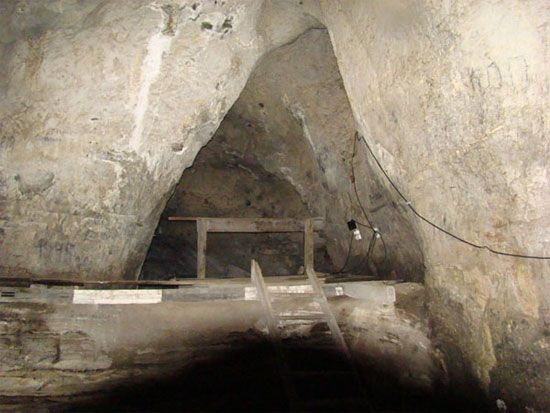Detecting mysterious traces of gibbons
In the Altai region, Russian paleontologists have discovered an unknown form of prehistoric people.
Studying the genome of the remains found in the famous Denisov cave today, scientists have determined a 17% coincidence with the Neanderthal gene, another 4% of the hominid gene has not been identified. .
Unexpected results forced the paleontologists to dig deeper. The search was carried out in ancient soil layers more than the soil layer found 'Denisov'.
This is not the only impressive information from the survey results. Decoding Denisov, Altai primitive human DNA remains, showing 6% of genes resemble modern Southeast Asian residents.
On this basis, academician Anatoli Derevianko, who directed the research, classified "Denisovs" into modern human subspecies. Archaeologist Michael Shunkov said: 'We have clarified the process of human division occurring about 60-70 thousand years ago.

Denisov cave
'Part of this class went to Altai, where "Denisovs are", the other migrated to the southeast. Although in transit areas - in Southeast Asia, in China, there was no trace of "Denisovs" in the genome from fossil remains of prehistoric humans. But 6% of the genes of modern Southeast Asian residents have been found to show that "Denisovs" have joined in the formation of modern humans. This is very important. "
In addition, during excavation, archaeologists found the remains of Neanderthals living at the same time as the "Denisovs" at a nearby cave. Previously it was thought that Neanderthals did not live so far in the East. Researcher Sunkov said that there are opinions that both groups belong to the Family who have participated in the formation of modern people.
"This is called inbreeding - mixing in certain areas. Our recent research indicates that Denisovs and Neanderthals found in caves also blend together. And that's an unexpected result ".
Thus, the perception of the formation of humanity is now: There are four lines of modern human development: the African homo sapience, the Eurasian Neanderthal, the Denisov Altay and the Eastern - inhabited. People of Chinese territory today.
Previously popular monocentrism about human migration from Africa could not stand up to criticism. Dr. Derevyanko's idea of polycentrism seems more convincing and confirmed by data from Russian archaeologists and paleontologists.
In the scientific world, the discovery of "Denisovs" is the second most important position after the discovery of the Higgs. On June 12, 2013, Anatoli Derevianko was awarded the Russian Federation State Award for outstanding discoveries in ancient history research.
- Vietnamese gibbons on the brink of extinction
- Lam Dong rescues precious black gibbon
- Prove human ancestors of Asian origin
- Very rare fossils of gibbons
- Gibbons 'sing' to ward off enemies
- Motherhood between dogs and gibbons
- The plant species detects explosives
- Bac Kan: Detecting traces of prehistoric people in Ba Be
- Detecting traces of ancient harbor
- Dozens of relatives of people are about to disappear
- New hypothesis toward migration of ancient people
- Gibbon species have the ability to sing like professional opera singers
 Discovered an ancient centipede fossil 99 million years old
Discovered an ancient centipede fossil 99 million years old Discovered bat-like dinosaurs in China
Discovered bat-like dinosaurs in China Discovered a 200-year-old bronze cannon of the coast
Discovered a 200-year-old bronze cannon of the coast Discover 305 million-year-old spider fossils
Discover 305 million-year-old spider fossils